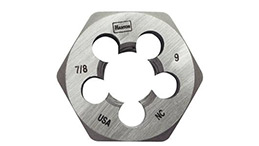
Oct . 17, 2024 02:11
Back to list
gas safety relief valve
Understanding Gas Safety Relief Valves A Crucial Component in Gas Safety Systems
Gas safety relief valves are essential components in various industrial and residential systems that utilize gas. These valves play a critical role in maintaining safety by preventing the accumulation of excessive pressure, which can lead to catastrophic failures or explosions. This article explores the importance, functionality, and maintenance of gas safety relief valves.
What is a Gas Safety Relief Valve?
A gas safety relief valve is a mechanical device designed to release excess pressure from a gas system to prevent damage or accidents
. When the pressure in a gas-containing vessel exceeds a predetermined limit, the relief valve opens to allow gas to escape, thereby reducing the pressure to safe levels. These valves are crucial in applications involving compressed natural gas, propane, and other gaseous substances.Importance of Gas Safety Relief Valves
The primary role of safety relief valves is to ensure the safety of both people and property. High-pressure gas can pose significant dangers, including fires, explosions, and toxic gas leaks. By automatically venting excess pressure, these valves help prevent potentially devastating incidents. They are an integral part of regulatory compliance, as industries are often required to adhere to safety standards set by organizations such as the Occupational Safety and Health Administration (OSHA) and the American Society of Mechanical Engineers (ASME).
Another essential aspect is the protection of equipment. Excessive pressure can damage pipes, tanks, and other machinery in a gas system, leading to costly repairs and operational downtime. Relief valves, by ensuring pressure remains within safe bounds, help maintain the integrity and efficiency of gas systems.
How Do Gas Safety Relief Valves Work?
gas safety relief valve

Gas safety relief valves operate based on a simple mechanical principle. They feature a spring-loaded mechanism that holds a disc or seat closed. As pressure builds up within the system, it eventually reaches the valve's set pressure, which causes the valve to lift or open, releasing gas into the atmosphere or a designated safe area. Once the pressure decreases to a safe level, the spring mechanism resets the valve, closing it and allowing normal operations to resume.
There are different types of relief valves, including direct-acting and pilot-operated valves. Direct-acting valves respond immediately to pressure changes, while pilot-operated valves utilize a smaller control system to manage larger flows. The choice of valve depends on various factors, including the specific application, pressure requirements, and flow capacity.
Maintenance of Gas Safety Relief Valves
To guarantee the effectiveness of safety relief valves, regular inspection and maintenance are crucial. Operators should establish a routine maintenance schedule to check for signs of wear, corrosion, or damage. Testing the valve’s functionality is also necessary to ensure it opens at the correct pressure and seals properly when closed.
Operators should pay close attention to the manufacturer’s guidelines regarding maintenance intervals and procedures. Additionally, it’s crucial to keep valves clean and free from obstructions to ensure they operate smoothly.
Conclusion
Gas safety relief valves are vital for ensuring the safe operation of gas systems. By preventing overpressure scenarios, they protect both human life and equipment from the dangers associated with high-pressure gas. Understanding their function, importance, and maintenance can ensure that these devices operate effectively, providing peace of mind for operators and safety for all. As industries continue to evolve and expand, the role of safety relief valves will remain a cornerstone of gas safety management.
Latest news
-
Safety Valve Spring-Loaded Design Overpressure ProtectionNewsJul.25,2025
-
Precision Voltage Regulator AC5 Accuracy Grade PerformanceNewsJul.25,2025
-
Natural Gas Pressure Regulating Skid Industrial Pipeline ApplicationsNewsJul.25,2025
-
Natural Gas Filter Stainless Steel Mesh Element DesignNewsJul.25,2025
-
Gas Pressure Regulator Valve Direct-Acting Spring-Loaded DesignNewsJul.25,2025
-
Decompression Equipment Multi-Stage Heat Exchange System DesignNewsJul.25,2025

